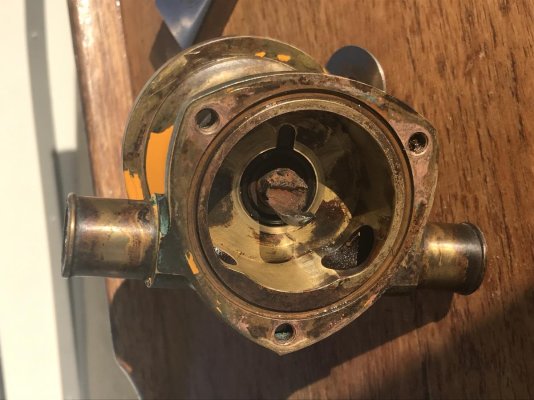AusCan
Guru
- Joined
- Jul 15, 2012
- Messages
- 3,218
- Location
- Australia
- Vessel Name
- Kokanee
- Vessel Make
- Cuddles 30 Pilot House Motor Sailer
I was making use of the extra time on hand, and checking the raw water impeller yesterday. The impeller didn't seem to be coming out as easily as usual. With only access from above, I couldn't see what the problem might be. Instead I pulled off the complete pump to have a better look. I'm glad I did.
The end of the impeller drive shaft had corroded away leaving just enough to keep the impeller turning.
My initial thought was that it's a stray current problem.
Now I'm thinking it might be cavitation issue due to lack of water flow. I always thought my thruhull valve on the intake was small at only 3/4" but when I double checked it today it turns out it is only heavy walled 1/2" valve. It may have been big enough for the original Volvo (or not), but it may have problems supplying the water flow for a 4 cylinder diesel.
Any thoughts?
The end of the impeller drive shaft had corroded away leaving just enough to keep the impeller turning.
My initial thought was that it's a stray current problem.
Now I'm thinking it might be cavitation issue due to lack of water flow. I always thought my thruhull valve on the intake was small at only 3/4" but when I double checked it today it turns out it is only heavy walled 1/2" valve. It may have been big enough for the original Volvo (or not), but it may have problems supplying the water flow for a 4 cylinder diesel.
Any thoughts?


